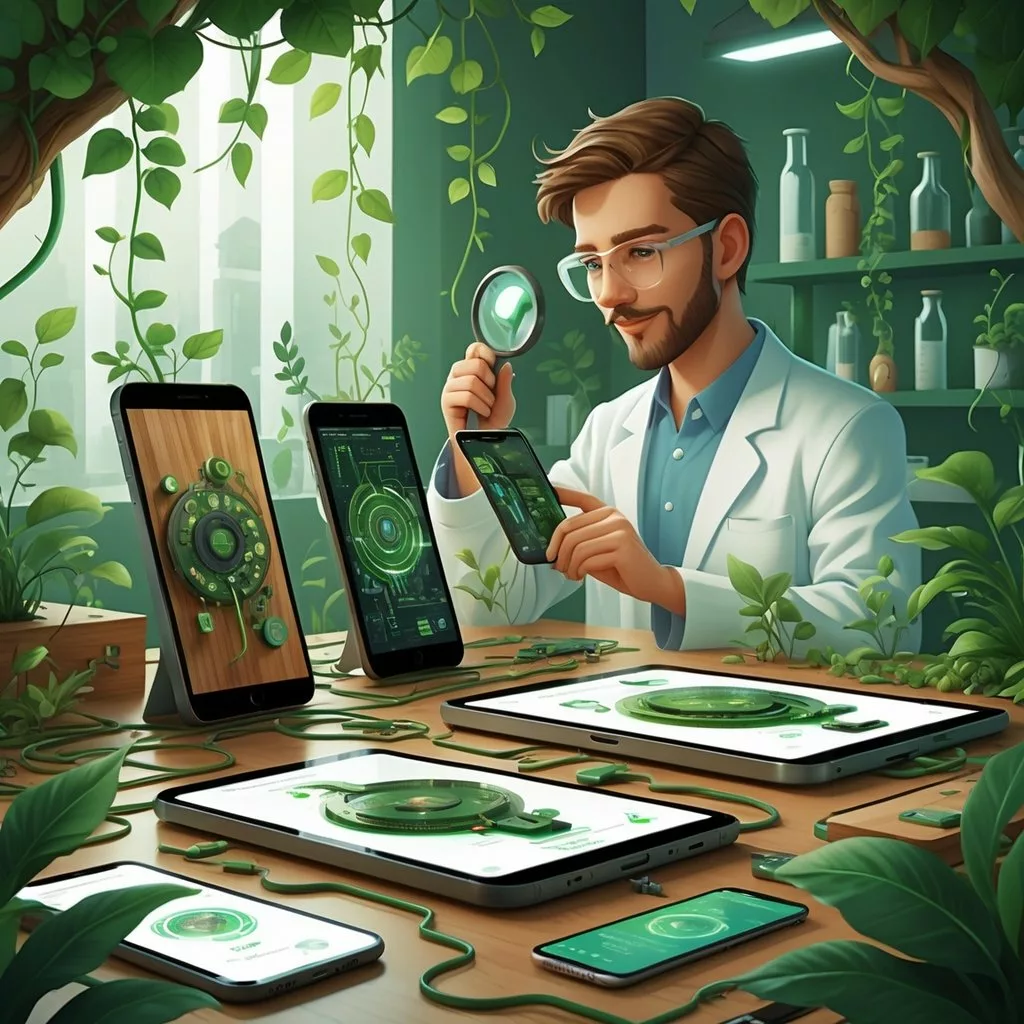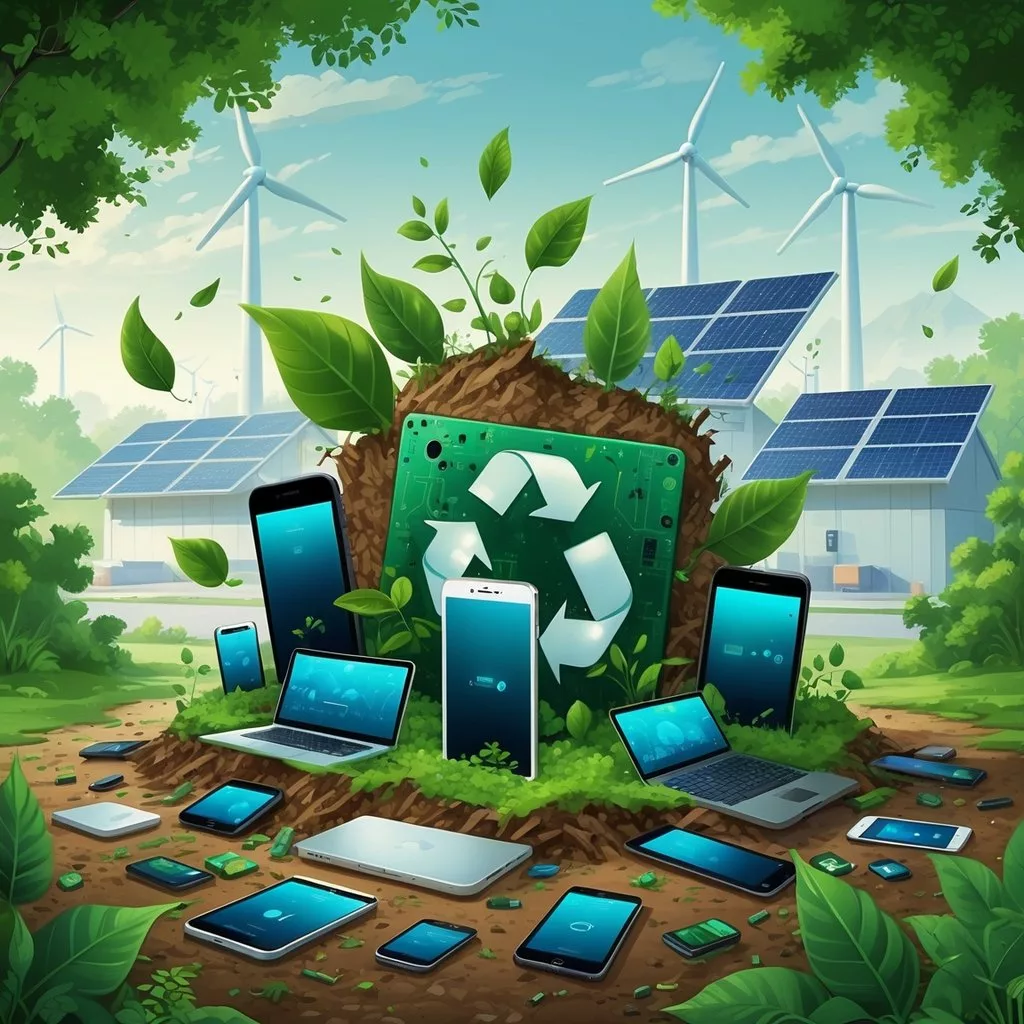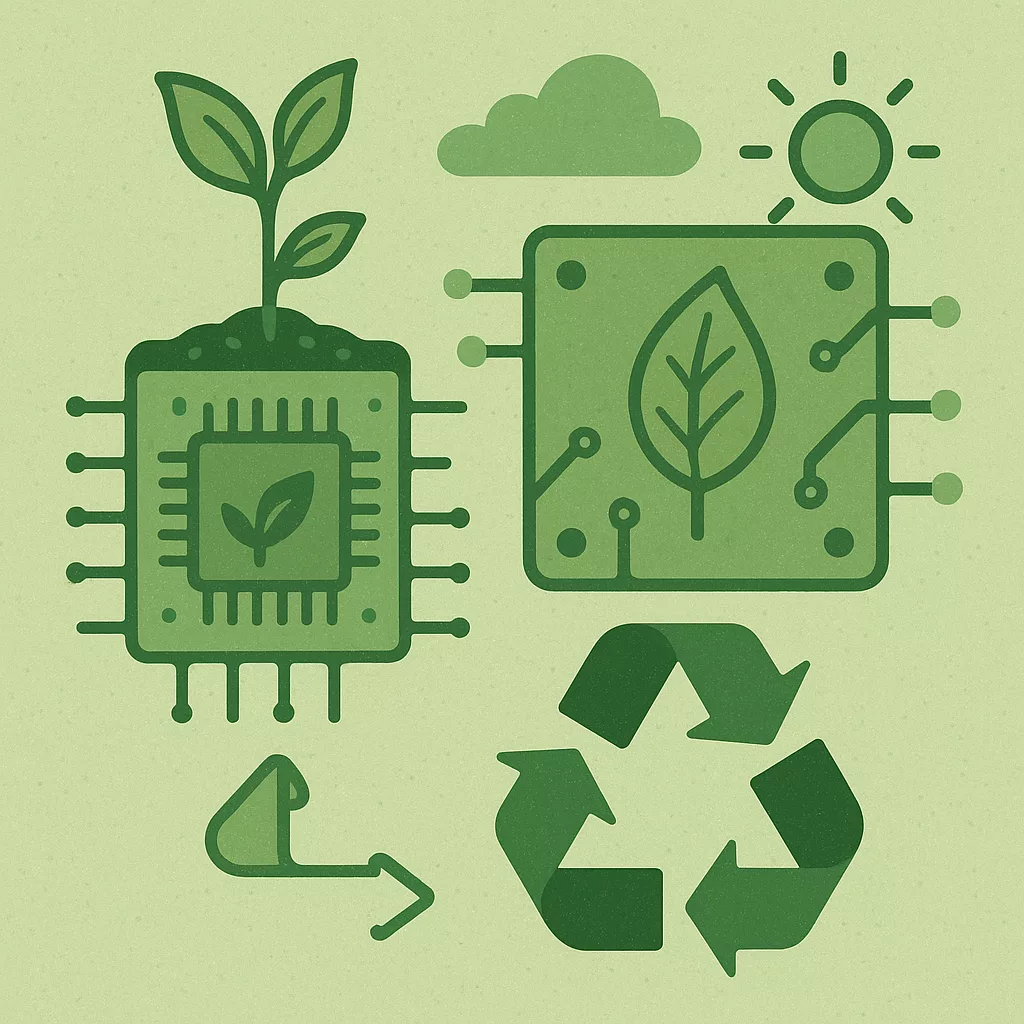There’s a new chapter opening up in the tech world, and it’s all about biodegradable electronics. Instead of chasing only faster chips or sleeker screens, manufacturers are starting to rethink how gadgets interact with the environment and with us.
By turning to materials that can break down naturally, these next-gen devices are meant to shrink the environmental mess left behind when our old tech bites the dust.

Biodegradable electronics are shifting our expectations about what happens when we toss out our tech. Most gadgets today are built with stubborn plastics and metals, but these new devices use things like organic semiconductors and bioplastics instead.
This isn’t just about being green for the sake of it—it nudges us toward a more sustainable way of living with technology. It also gives us a nudge to be more thoughtful about the stuff we use every day.
Confronting E-Waste with Biodegradable Tech Solutions

Electronic waste is piling up all over the globe. Every year, millions of tonnes of old gadgets get tossed, and only a tiny bit actually gets recycled the right way.
The rest? It ends up leaking nasty stuff—think lead, mercury, cadmium—into the ground and water, sticking around for years and causing headaches for people and wildlife alike.
There’s a glimmer of hope, though, as biodegradable electronics start to make their mark. These clever devices are made from stuff that breaks down on its own, helping to slow the buildup of hazardous waste.
Unlike old-school electronics that need complicated recycling (which, let’s be honest, barely happens), biodegradable gadgets are built for a gentler exit when they’re done.
Key Benefits of Biodegradable Electronics
| Feature | Conventional Electronics | Biodegradable Electronics |
|---|---|---|
| Material Composition | Metals, plastics, toxic chemicals | Plant-based polymers, organic conductors |
| End-of-Life Outcome | Landfill/incineration or hard-to-recycle | Breaks down naturally, minimal environmental footprint |
| Environmental Impact | Soil and water pollution, persistent waste | Lower pollution, reduced toxic residue |
| Energy Consumption | High for manufacturing & recycling | Potentially lower overall energy use |
While recycling rates for electronics are still pretty dismal, switching to compostable and recyclable materials could make a real dent in the waste problem.
Companies are finally starting to put money and effort into these greener solutions, hoping to chip away at the environmental impact of all our discarded gadgets.
Curious? There’s more on the push to make electronics compostable and recyclable, plus a look at the rise of biodegradable electronics in the tech world.
Pushing Boundaries: Pioneering Advances in Sustainable Electronic Solutions

Materials science is kind of having a moment right now. Researchers are figuring out how to make things like transistors, capacitors, and diodes from biodegradable substrates—using biopolymers, self-healing plastics, and even flexible nanomaterials.
Now, we’re seeing electronics that keep up with performance demands but can still break down naturally when they’ve done their job.
Flexible displays and stretchy circuits are cropping up in wearables, smart clothing, and healthcare devices. There’s talk of tablets and foldable phones made with bendy, eco-friendly materials, too.
Graphene, carbon nanotubes, and quantum dots are all in the mix, aiming to keep devices tough and efficient but still biodegradable.
Key areas of progress include:
- Smart Home Devices: Biodegradable sensors for automating daily life.
- Wearable Devices: Skin-friendly, lightweight circuits made from biomaterials.
- Medical Devices: Temporary sensors that just dissolve when they’re done.
- Agricultural Electronics: Sensors that actually help the soil after use.
| Innovation Area | Example Application | Emerging Material |
|---|---|---|
| Flexible Electronics | Smart watches, smart textiles | Biopolymers, graphene |
| Stretchable Devices | Skin patches, health monitors | Carbon nanotubes, elastomers |
| Self-Healing Tech | Damage-resistant circuit boards | Self-healing polymers |
| Disposable Gadgets | Medical patches, environmental tags | Cellulose compounds |
Smart grids are starting to use biodegradable components, which means future infrastructure upgrades could create a lot less waste.
Materials innovation is definitely leaning hard into sustainability, with a real focus on circular economy ideas.
Research is moving fast, and suddenly eco-friendly smartphones, tablets, and smart home gear don’t seem so far-fetched. Companies are getting serious about making electronics that actually fit in with the environment—it’s not just a theory anymore, it’s starting to show up in the real world.
Crafting Tomorrow: The Role of Biodegradable Electronics in Shaping Our Sustainable Legacy
Biodegradable electronics are starting to set a new bar for what we expect from tech. They’re kind of forcing everyone to think about environmental responsibility in a way that’s hard to ignore.
By using things like biodegradable plastics, mycelium composites, and other sustainable materials, manufacturers are shrinking the carbon footprint of their devices. These changes are pretty well aligned with the circular economy mindset, where products are designed with the whole life cycle in mind.
Key advantages of biodegradable electronics include:
- Lowered e-waste: Devices break down naturally, so landfills aren’t overflowing with old tech.
- Use of renewable resources: Materials come from plants, fungi, or recycled stuff—not just oil.
- Promotion of sustainable design: Life cycle thinking helps cut down on waste from the start.
| Feature | Traditional Electronics | Biodegradable Electronics |
|---|---|---|
| End-of-life impact | Persistent e-waste | Minimal residue after breakdown |
| Raw material sources | Nonrenewable, petroleum-based | Renewable, plant-based, mycelium |
| Compatibility with recycling | Often limited | Designed for simple decomposition |
| Carbon footprint | High | Reduced through green materials |
Researchers are hustling to boost performance and cut costs, hoping to get these technologies into the mainstream. The growth of mycelium-based substrates and biodegradable plastics is a clear sign that we’re moving away from finite resources, finally.
This shift is allowing for products that do what they’re supposed to, then just… go away, fitting right into sustainability goals.
It’s not all smooth sailing, though. Durability and mass production are still tricky, but momentum is picking up.
With the circular economy gaining traction, companies are being pushed to think about longevity, recycling, and environmental care from start to finish. As more people wake up to the e-waste issue, devices built from renewable resources are really starting to matter.
If you ask me, the rise of biodegradable electronics is a bold rethink of how tech fits into our lives—and the world. Every step forward is a small promise: maybe someday, our gadgets won’t outlive us by centuries.
Want to dig deeper? Check out this overview on the future of biodegradable electronics and how these trends are shaping a more sustainable path.
Frequently Asked Questions
What Positive Environmental Effects Do Biodegradable Electronics Offer?
Biodegradable electronics help cut down on e-waste by breaking down naturally, instead of hanging around in landfills. Less tech trash means less pollution, too.
Since they’re made from renewable or compostable materials, they also ease the strain on limited resources. For more on this, check out this look at biodegradable electronics and e-waste reduction.
How Do Compostable Materials Affect the Lifespan of Electronic Products?
Devices made with biodegradable stuff are designed to last just as long as they’re needed—no more, no less. After that, they break down safely, which works great for temporary things like medical implants or single-use sensors.
How Is Biodegradable Technology Transforming Electronics Manufacturing?
Old-school manufacturing leans hard on plastics and metals that stick around forever. Biodegradable electronics push the industry to use things like bioplastics and natural fibers instead.
This means manufacturers have to rethink how they build things and where they get their materials. If you’re curious, here’s more on how manufacturing is being influenced by biodegradable electronics.
What Obstacles Exist in Making and Disposing of Biodegradable Tech?
There are some bumps in the road—like durability issues, higher costs for green materials, and the need for special recycling or composting systems. Sometimes, current waste infrastructure just isn’t set up for these new materials, as explained in this summary of biodegradable electronic component challenges.
How Does Functionality of Biodegradable Devices Compare to Conventional Ones?
Honestly, biodegradable electronics aren’t quite up to par with traditional devices when it comes to toughness or long-term performance, especially in rough conditions. They’re best for things you don’t need to last forever, like disposable sensors or short-term medical gear.
But the gap is closing, and research is making them more reliable all the time.
What Recent Breakthroughs in Biodegradable Materials Are Influencing Tech?
Innovations like bioplastics, water-soluble substrates, and new organic semiconductors are shaking up the world of biodegradable electronics. Researchers are rolling out materials that break down in a predictable way, sidestepping environmental harm.
This opens the door for more creative and sophisticated device designs. If you want to dig deeper, check out some details on biodegradable materials and their impact.

